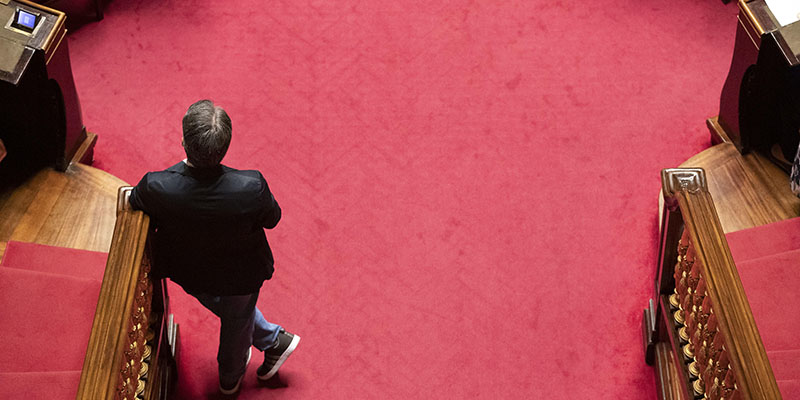
[ad_1]
In the constitutional referendum on cutting the number of parliamentarians, Yes won with more than 69 percent, while No stopped at just over 30. It is the most important institutional change in the history of the Italian Republic and will be applied by next elections: therefore in 2023, if the natural expiration of this legislature is reached.
House seats will go from 630 to 400 and Senate seats from 315 to 200 – a reduction of about a third. Today there is one deputy for every 96,000 inhabitants and one senator for every 188,000 inhabitants: with the cut there will be one deputy for every 151,000 inhabitants and one senator for every 302,000. Therefore, the number of representatives per inhabitant will decrease significantly, but Italy will remain in the average of other Western European countries. However, when making comparisons with other European countries, it is necessary to go beyond the quantitative measure: in many European countries, in fact, the second cameras have different prerogatives.
The minimum number of senators per region will drop from 7 to 3 with the exception of Trento and Bolzano, equivalent to the regions, which will be left with 3, while for Molise there will be 2 and one for Valle d’Aosta. With the approval of the reform, the number of parliamentarians elected abroad also decreased, from 6 to 4 for the Senate and from 12 to 8 for the Chamber. The senators for life nominated can also be a maximum of 5 at the same time: previously, due to an ambiguity of interpretation, 5 was intended as the maximum number of appointments for each president, not counting the senators for life who are already in office.
According to Carlo Cottarelli’s Observatory of Public Accounts of Italy, after the reform, the savings will be 57 million per year, which is equivalent to 0.007 percent of Italian public spending: plus or minus one coffee (95 cents) per year per every Italian. .
After the reform, it will be necessary to rethink the constituencies: the government must do so within 60 days after the entry into force of the constitutional reform. It will be able to do so by passing an electoral law, a condition that the PD had set to support the Yes: the House Constitutional Affairs Committee has already approved a bill as a basic text, a proportional system with a threshold. 5 percent, but not everyone agrees. If the constituencies are not modified over time by the new electoral law, the current one will be complemented by a regulation approved during 2019 that provides for a cut of three-eighths of the constituencies provided for by the current electoral law.
Parliamentary regulations will also have to be necessarily reviewed, especially with regard to the procedures that provide for the quorum or the composition of the Standing Committees, for which proportionality with the number of groups is now provided.
Regarding the election of the next President of the Republic, the modalities will vary according to the time of the legislature. If the current government lasts, nothing will change: the next elections will be held in 2022 with the rules prior to the reform. If, on the other hand, a vote is taken before that date and there will be a new legislature, in February 2022, 600 parliamentarians and no longer 1009, senators for life and, as before, 58 regional delegates (each regional council elects three delegates, except for the Aosta Valley which chooses one). This will change the number of voters (in the first three votes a two-thirds majority is required, while from the fourth vote the absolute majority is sufficient), but above all and consequently the weight of the regional delegates. For this reason, a modification has been proposed that provides for the reduction of one third of the regional delegates for the election of the President of the Republic.
[ad_2]